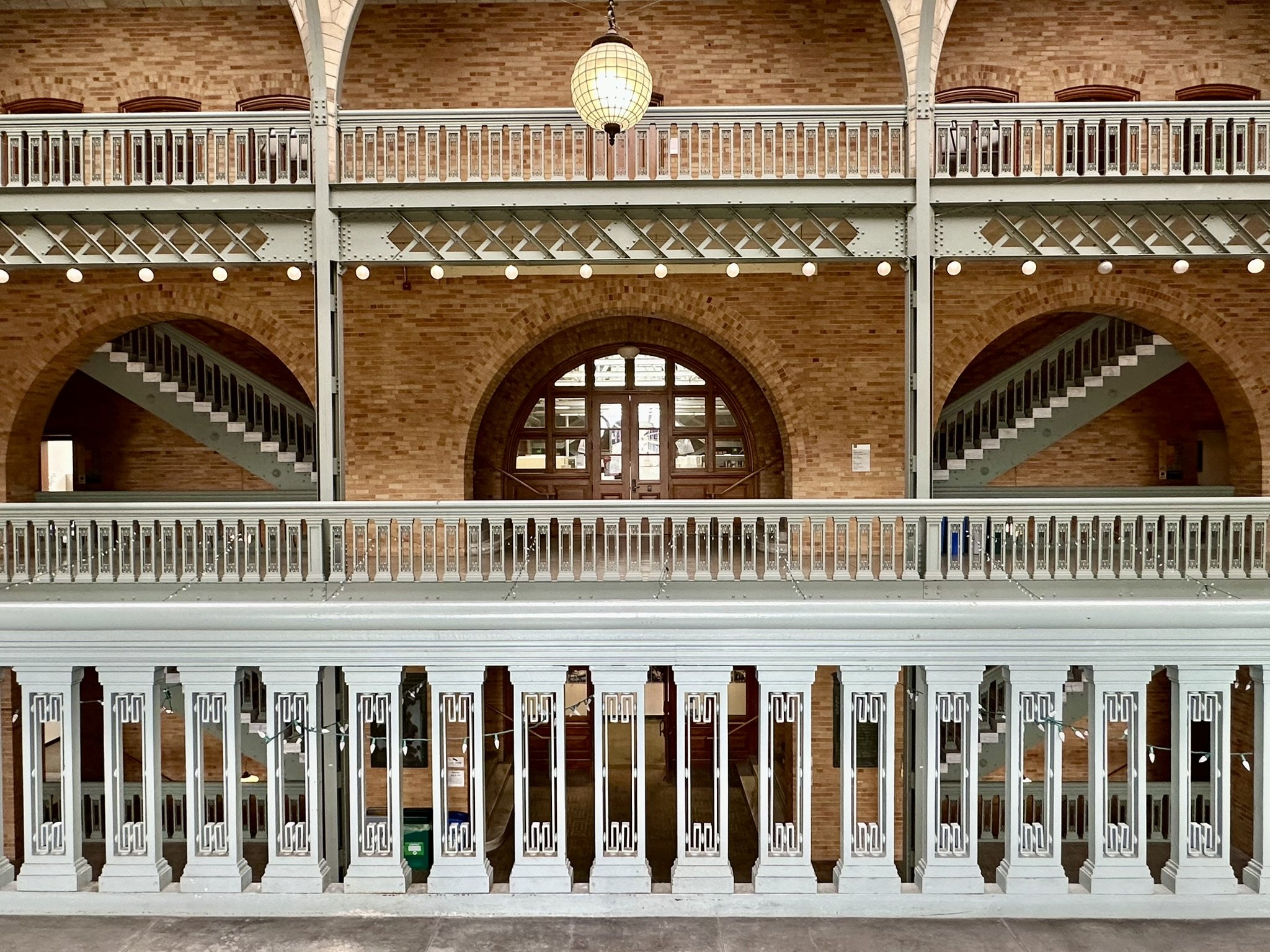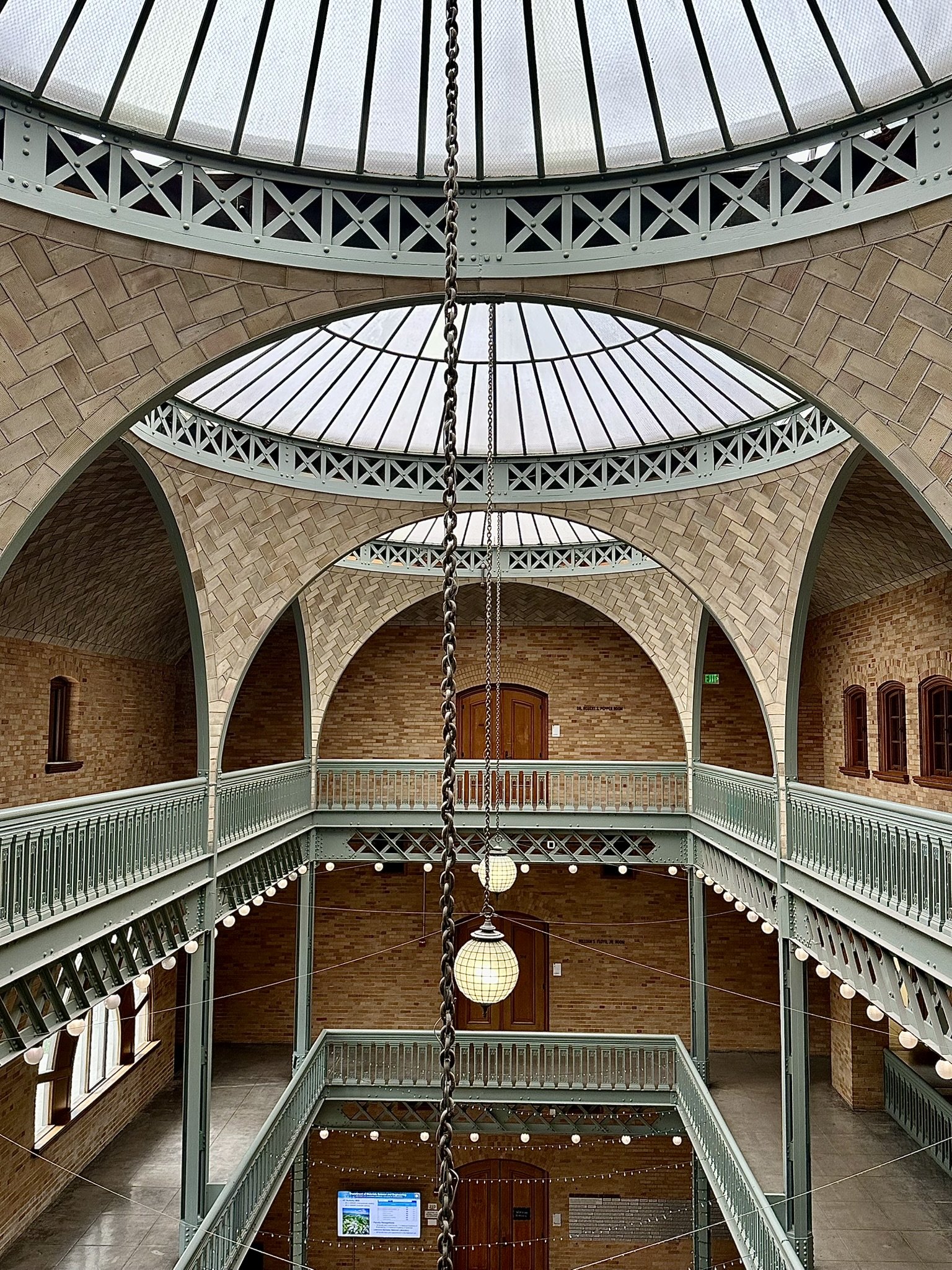3 in Berkeley, CA
There were a number of architectural highlights from the recent Bay Area visit. The following masterworks by Julia Morgan, John Galen Howard and Bernard Maybeck are listed in the National Register of Historic Places.
Berkeley City Club Architect: Julia Morgan, 1929
I first visited the Berkeley City Club last year and stepped inside to view the indoor pool which I had seen posted on instagram. When I learned the club was a hotel, I vowed to return for a stay and swim!
I stayed on the top floor in a corner room with lovely light and wonderful views of San Francisco across the bay as well as both the Bay Bridge and the Golden Gate Bridge.
———
Opened in 1930 to honor the need for a women’s activity center, The Club, also known as the “Little Castle,” was designed by famed California architect Julia Morgan. As a center for social, cultural, recreational, and family activities in the East Bay, the Berkeley Women’s City Club gained over 4,000 female members. In 1963 the Club opened to all genders and in 1975 was designated as a city landmark. Two years later, the Berkeley City Club was added to the National Register of Historic Places.
Born in 1872, Julia Morgan enjoyed a long and prolific career as an architect in California - designing more than 700 buildings. She is best known for her work on Hearst Castle in San Simeon, CA.
First Church of Christ, Scientist, Berkeley Architect: Bernard Maybeck, 1910
I stopped by twice, once on the Tuesday that I arrived and again for a noon organ meditation before heading back to LA. How fortuitous that my visit to Berkeley coincided with the Thursday open time and when the purple wisteria is in bloom!
From Wikipedia:
Bernard Ralph Maybeck (February 7, 1862 – October 3, 1957) was an American architect. He worked primarily in the San Francisco Bay Area, designing public buildings, including the Palace of Fine Arts in San Francisco, and also private houses, especially in Berkeley, where he lived and taught at the University of California. A number of his works are listed on the National Register of Historic Places.
In his long-time home city of Berkeley, the 1910 First Church of Christ, Scientist, Berkeley is designated a National Historic Landmark and is considered one of his masterpieces.
Hearst Memorial Mining Building, UC Berkeley Architect: John Galen Howard, 1907 Renovation: NBBJ, 2002
I could not get enough of this wondrous building and was glad that I made the trek uphill to the northern edge of campus where it’s located. Imagine entering this atrium to head to a lecture or lab! The solid construction and attention to detail was simpling amazing.
————
In 1902, philanthropist Phoebe Apperson Hearst commissioned this building as a memorial to her husband, George, who made his fortune in the silver and copper mines of the West.
A plaque in the entry hall remembers him as "a plain honest man and good miner." Mrs. Hearst also sought to provide mining engineers and students with laboratory space conducive to the very best work.
The building is considered the masterwork of founding campus architect John Galen Howard who designed the building with the assistance of the Dean of the College of Mines, Professor Samuel B. Christy and Berkeley-educated architect Julia Morgan.



















